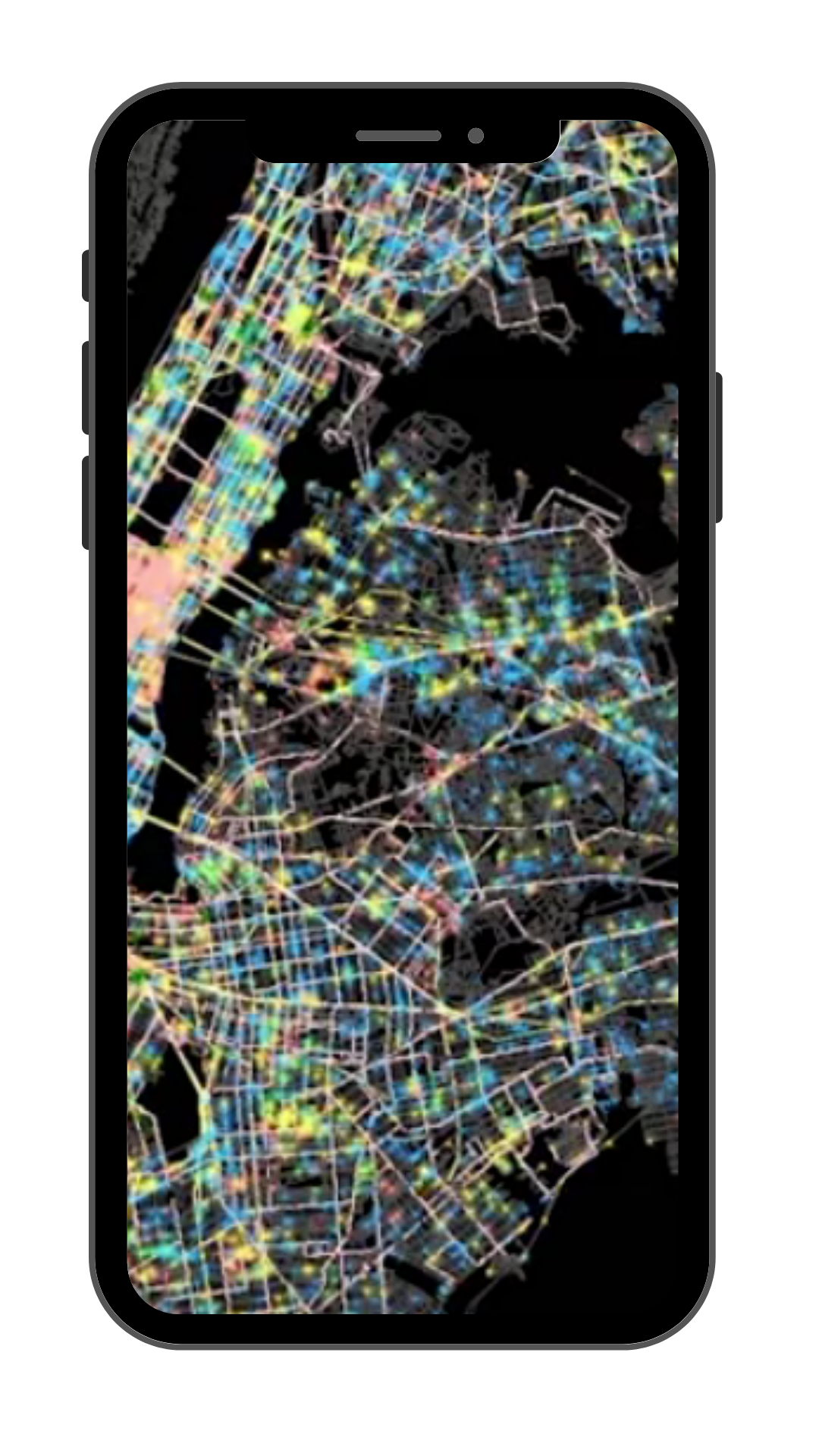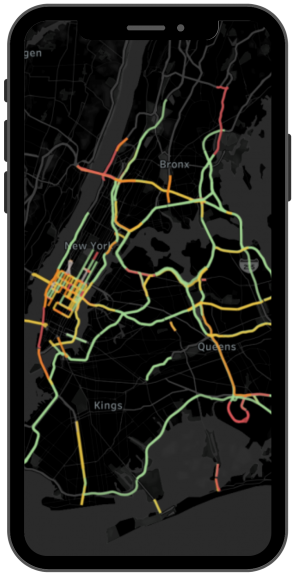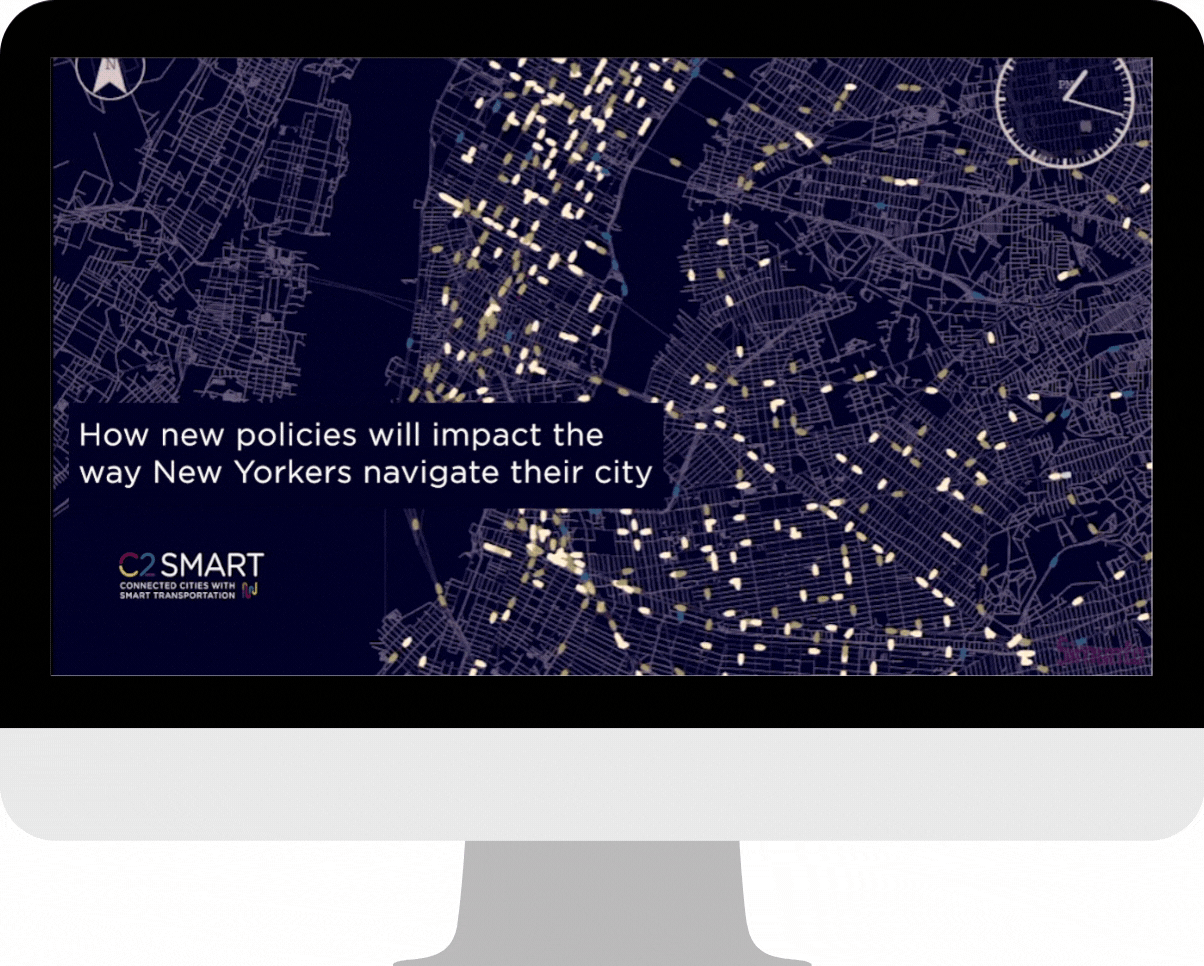Digital Twin solutions for Mobility and Safety
C2SMARTER leverages Digital Twin technology to facilitate interactions between individuals, the built environment, and their interconnected networks. Utilizing a comprehensive approach that includes statistical methods and artificial intelligence techniques, C2SMARTER seeks to unravel complex urban phenomena across microscopic, mesoscopic, and macroscopic levels of transportation dynamics. This strategic application of Digital Twin technology empowers C2SMARTER to offer innovative solutions that address the multifaceted challenges faced by modern urban systems.


Virtual testbeds to model and test new transportation technologies and policies
Transportation professionals are being challenged more than ever before to understand the impacts of new technologies and sweeping policy changes, a process which often involves high costs and risks to operations and safety. Moreover, emerging transportation alternatives and technologies, such as connected and autonomous vehicles and Mobility-as-a-Service, cannot be readily modeled using existing commercial tools. C2SMARTER seeks to alleviate these issues by building virtual testbeds, to allow for simulation-based deployment testing within a consistent virtual ecosystem that covers all transportation users.
A MULTI-AGENT, SIMULATION-BASED VIRTUAL TESTBED ECOSYSTEM
MATSim-NYC
NYU researchers developed a testbed for NYC using MATSim, a Multi-Agent Transportation Simulation. MATSim models transportation networks using a mesoscopic simulation based on cellular automata. It is open source and many extensions have been quickly developed for it to handle a wide assortment of policy needs and modes.
MATSim makes use of a synthetic population which is useful for modeling heterogeneous population segments. It incorporates a day-to-day adjustment process that can reflect learning from the population to achieve a social equilibrium under each technology scenario.

These research efforts created an underlying synthetic population for NYC for a recent base year (2016) that includes key emerging modes like bikeshare and for-hire vehicles (FHVs) and constructed, calibrated, and validated a MATSim model of NYC using the synthetic population to evaluate a set of scenarios for which existing tools are not equipped.

A Multiscale Simulation Platform for Connected and Automated Transportation Systems
MATSim-Seattle
Using data provided by Washington DOT, Seattle DOT, and Bellevue DOT, UW researchers are working to create a multiscale simulation of the Greater Seattle network to include the Metro routes and schedules, arterial speed factors, motorway speed factors, arterial capacity factors, and motorway capacity factors. The simulation will allow researchers and policymakers to test vehicle/traffic control algorithms, gain insights of micro/macro traffic dynamics, and design traffic management strategies across Greater Seattle.

Digital Twin Technologies Towards Understanding the Interactions between Transportation and other Civil Infrastructure Systems
El Paso Digital Twin
Digital Twin (DT) technology is a powerful decision support tool for the design, maintenance, and management of transportation infrastructure, particularly for studying the interdependency with other infrastructure systems. UTEP researchers used the UTEP campus as a living lab by creating a DT model of campus in order to study the impact of construction projects on the surrounding transportation infrastructure.
